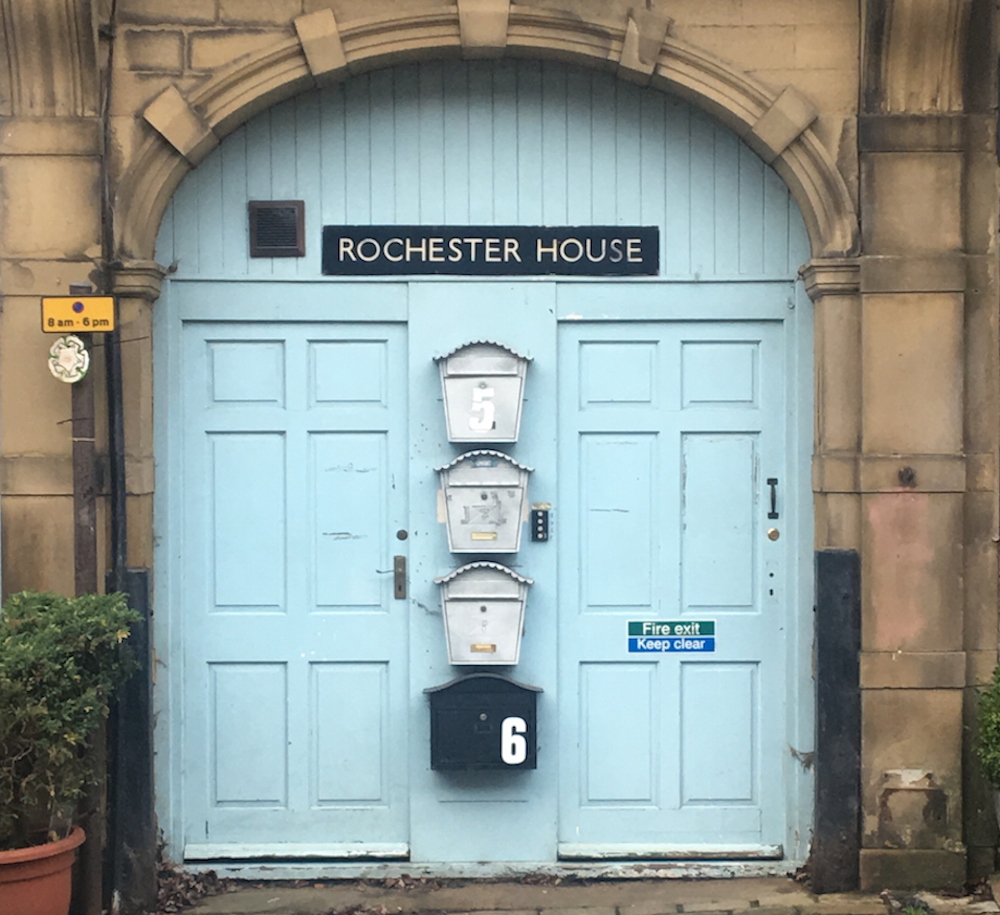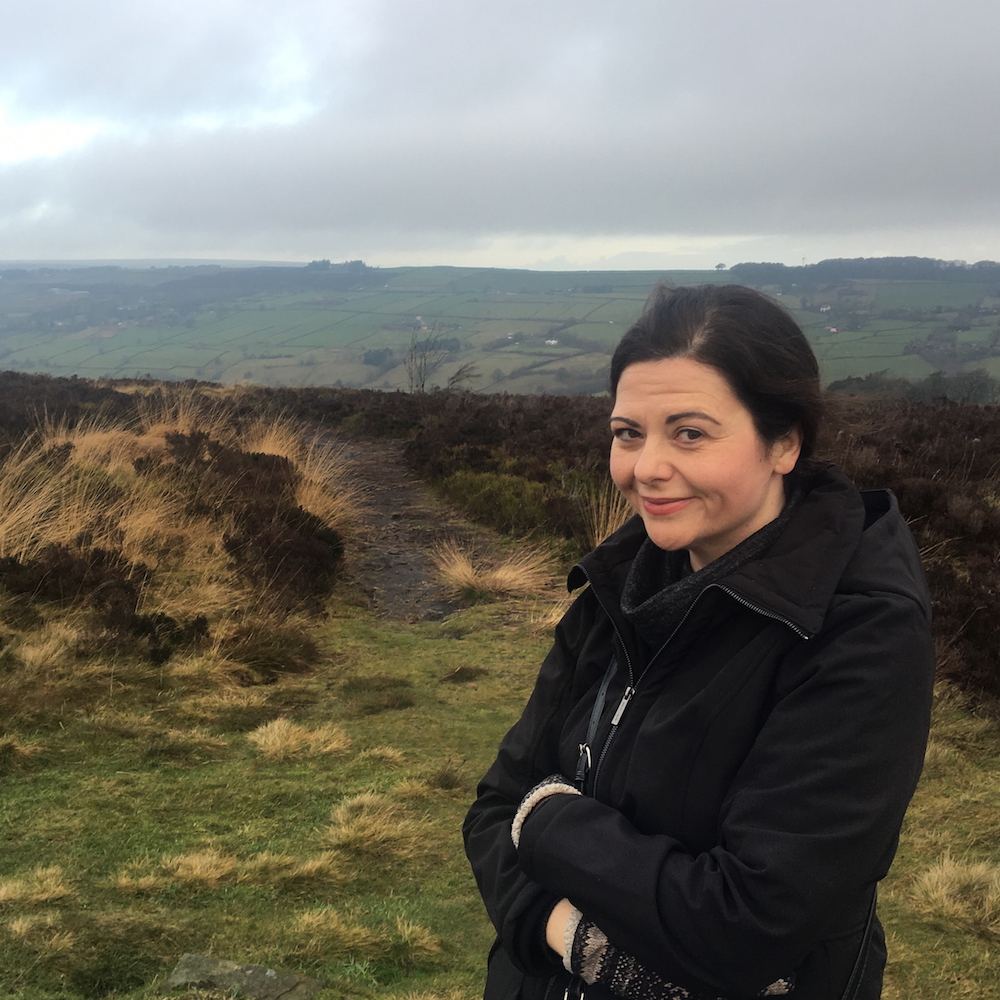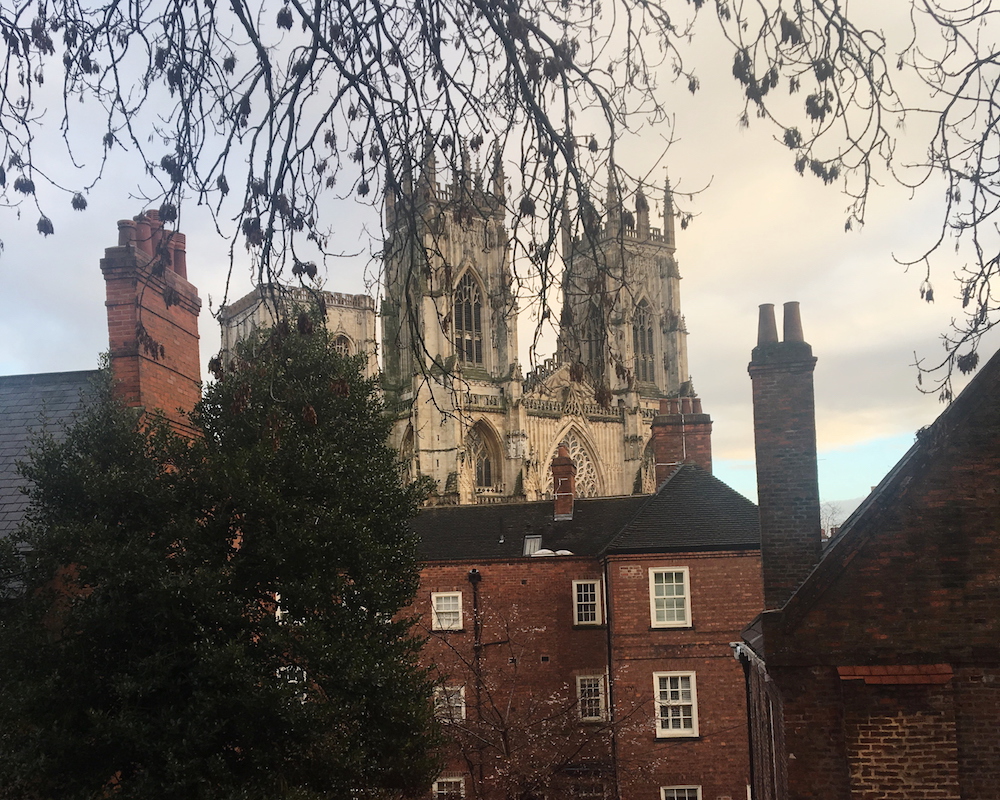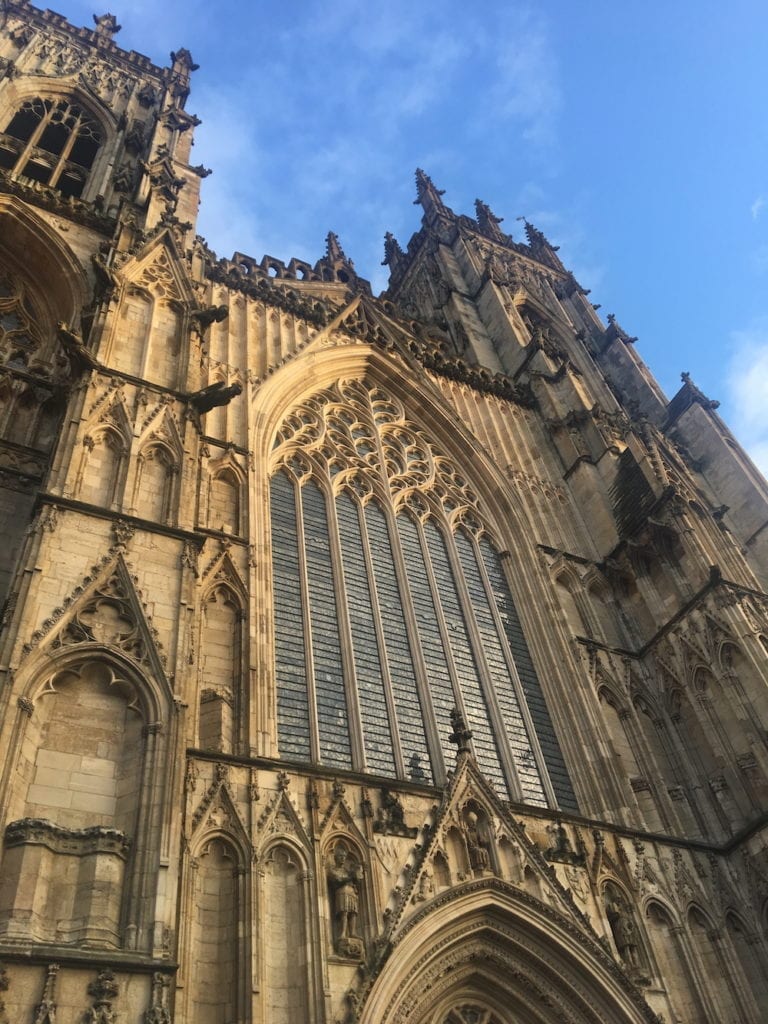Trips around England as a young adult and being married to an Englishman taught me this—the real England is in the smaller cities and villages. London is a remarkable place, but it is also teeming with tourists, expensive and full of queues and logistical stress. For these reasons (and maybe my slight infatuation with “Jane Eyre” and the Brontë sisters), we chose to visit Yorkshire in December.
Haworth, the Brontë & The Moors
When we arrive at the train station in Keighley (pronounced “Keith-ley”) we have two transport choices into the village of Haworth: taxi or steam train. Frustrated by the drive up the narrow and steep streets, the driver dumped us with our suitcases next to a flight of slippery looking stone stairs leading up to the Fleece Inn. Conveniently located at the highest point in the village, we earned our room with a view as we trudged up and down Haworth steep Main Street.
The sun sets around 3:45 p.m. so we dump our bags and make our pilgrimage to the Brontë Parsonage, the home where the famous writing sisters lived. As we walked through Charlotte Brontë’s bedroom—her wedding bonnet in a glass case along with her pens and tiny perfect copies of her famous illustrations, a portrait of her on the wall–I am struck by how concentrated life was in a small village, and how immense the impact of art created from such carefully curated living.
The next morning, following a Yorkshire breakfast with a pot of hot tea—not fancy pinky out tea service, but dark tea to warm your bones from the cold damp England air that crawls into your bones, we head out for the moors. As the world’s first Fairtrade village, we notice the shops in Haworth are committed to quality products versus cheap tchotchkes, while the coffee shops and restaurants offer a menu of organic and vegetarian options.

We make our way up the steep and slick cobbled streets, past the grey buildings leaning against one another as if fighting to stand despite the steep geography of the village, weaving through a line of linked-arm school children streaming out of the church and, finally, to the narrow path behind the church leading to the moors. A twenty-something couple with cool haircuts and sneakers snap photos of the moss-covered tombstones in the Brontë cemetery, the words long rubbed clean by rain and wind. Following signs for the Pennine Way (a national trail that runs nearly 300 miles through England) and the Brontë Moors.
Soon, the landscape expands and explodes into the wild, rolling space of the mud and heather of the Haworth Moor. The 50p pamphlet we picked up in the visitors’ center marks the triangulation pillar used before aerial photography and satellite navigation for map making and its clear why as we stand on a rolling hill with a panoramic view, looking down toward Keighley and at the skyline toward the home that inspired “Wuthering Heights.”

Multiple eras and history layered atop one another define York. The size is more Boston than New York, and it often took us longer to navigate to our destination then to walk to it. Upon stepping out of the train station, we immediately lost our way to our B & B. Fumbling with our phones and Google maps, a woman walking past stops to ask if we need help. We show her our map and, what do you know? She is going the same way. My pickpocket antenna rise-up, but, as we walk and chat along the path it turns out she is just a friendly local, more Paddington than Fagan.
First claimed by the Romans, then the Vikings and, apparently at Christmas, Japanese tourists, with a population of just over 200,000 it’s easy to navigate and enjoy without hassle. Defined by Medieval, Victorian, Neo-Classical and Modern architecture, York is like a lost and found for historic markers and artifacts, wherever we stood a Viking or a Roman built or battled something. The food options mirrored how tastes have shifted, from pub food to Spanish tapas to Turkish food and wine bars.

An arts and culture traveler at heart (my personal interest in Vikings begins and ends with the actor who plays Ragnar Lothbrok on the History Channel show), we skip the Jorvik Center and visit the York Art Museum. Shaking off centuries of history, we experience Janet Cardiff’s The Forty Part Motet—40 speakers set in a circle each one a recording of one voice in a choir. Walking through the circle we can hear each individual voice as it if the person was standing right there. It was a future where all people had been erased and all that remained was a voice.
On our last day, we flip backward in time and visit the Yorkshire Museum which is filled with Roman artifacts that have either been dug up or washed up near the River Ouse. From coins to weapons to an entire mummified body complete with hair, the feeling of literally being on top of another culture is overwhelming. A quick visit to the Perky Peacock coffee shop in the medieval toll house on Lendal Bridge brings us back to the now.
We embrace our inner tourist and browse the gigantic Christmas Market and dip into THOR’S tipi bar, where we gulp down a mulled cider and spiked hot chocolate. This is where we find The Shambles, a medieval street most likely the inspiration for Harry Potter’s Diagon Alley. The cartoony slant and shape of the buildings—still working businesses–are more movie set than tourist trap.

York is a storybook version of England, ticking all the magical boxes: a soaring Victorian train station, medieval streets and a walkable snaking City Wall. Located at the junction of the River Foss and the River Ouse, there’s an enclosed feeling as we walk around the city, that you will never stray too far. The position of York Minster Cathedral in the center has the monumental feeling of the Arc de Triomphe. Being so close to architecture of this scale feels dreamlike. A few pints in, too cheap to pay the 11 GBP entry fee, I do at loop at the base of the cathedral twirling like Mary Tyler Moore and gape in awe at its gothic beauty, one of the largest cathedrals in Europe, and I am in proximity to it with no crowds to fight for a photo.
While London hustles and bustles to show-off its beauty, Yorkshire slowly reveals a sublime landscape and experience (even if you happen to visit in December).
Images by Shannon O’Neill.


So well done travel essay!